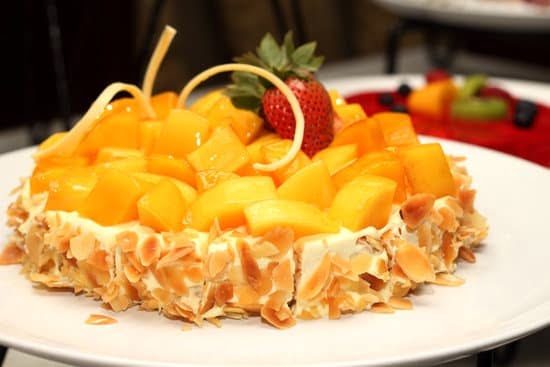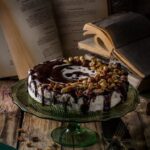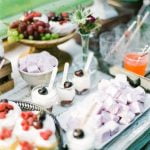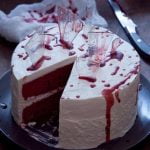Baking and decorating a cake is a beloved culinary art that brings joy and satisfaction to both the baker and those who indulge in the sweet creation. This article will guide you through the process of how to bake a cake and decorate it, from selecting the right ingredients to troubleshooting common issues that may arise. Whether you’re an amateur baker or a seasoned pro, there’s always something new to learn in the world of cake making.
The act of baking a cake holds a special place in many cultures and traditions, often symbolizing celebration, love, and togetherness. The aroma of a freshly baked cake wafting through the kitchen evokes feelings of warmth and nostalgia, making it a cherished experience for both the maker and the recipient. Moreover, the opportunity to unleash your creativity and transform a simple batter into a visually stunning dessert is undeniably thrilling.
In this article, we’ll delve into every aspect of creating the perfect cake – from selecting high-quality ingredients to preparing the batter with precision, baking it to perfection, crafting delectable frostings, mastering various decorating techniques, troubleshooting unexpected issues, and ultimately presenting a show-stopping masterpiece. So roll up your sleeves, preheat that oven, and get ready to embark on an exciting journey of baking and decorating your own delectable creations.
Selecting the Right Ingredients
When it comes to baking a delicious and visually appealing cake, the quality of ingredients plays a crucial role in the final outcome. From flour to butter, sugar, eggs, and flavorings, each component contributes to the taste and texture of the cake. Therefore, it is essential to carefully select high-quality ingredients for the best results.
Essential Ingredients for a Basic Cake Recipe
The foundation of any cake starts with simple yet essential ingredients such as all-purpose flour, granulated sugar, unsalted butter, eggs, baking powder or baking soda, salt, and vanilla extract. These basic ingredients form the base of most cake recipes and provide structure, leavening, flavor, and moisture.
Tips on Choosing High-Quality Ingredients
When purchasing ingredients for your cake recipe, it is important to prioritize quality. Look for unbleached all-purpose flour for a finer texture and better flavor. Choose organic or locally sourced eggs that are fresh and free-range for a richer taste and better color in your cakes. Use pure vanilla extract instead of imitation vanilla for a more robust flavor profile. Select high-quality unsalted butter with a higher fat content for a creamier texture in your cakes.
In addition to these key ingredients, consider using premium cocoa powder for chocolate cakes or fresh fruits and spices for added flavor complexity. By paying attention to the quality of your ingredients when selecting them from your local grocery store or specialty shops, you can elevate the overall taste and appearance of your homemade cakes.
Preparing the Cake Batter
When it comes to baking a delicious and moist cake, selecting the right ingredients is crucial. Here are some essential ingredients for a basic cake recipe:
- Flour: All-purpose flour is commonly used for baking cakes, but you can also use cake flour for a lighter texture.
- Sugar: Granulated white sugar is the most common sweetener used in cake recipes, but brown sugar can add a richer flavor.
- Eggs: Large eggs are typically used in cake batter to provide structure and moisture.
- Leavening agents: Baking powder and baking soda are essential for making the cake rise while it bakes.
- Fat: Butter or vegetable oil adds moisture and flavor to the cake.
When choosing these ingredients, opt for high-quality options to ensure the best results. Look for fresh eggs, pure vanilla extract, and unbleached flour for optimal taste and texture.
Once you have gathered your ingredients, it’s time to mix and prepare the cake batter. Following the recipe accurately is crucial for a successful outcome. Measure each ingredient precisely and mix them together thoroughly to create a smooth batter. Be mindful not to overmix, as this can result in a tough or dense cake.
By using high-quality ingredients and following these steps, you can ensure that your cake batter turns out just right. The next step after preparing the batter is baking the cake itself – an essential aspect of creating a perfect dessert.
Baking the Cake
Preparing the cake batter is just one part of the process; baking the cake to perfection is equally important to ensure a delicious end result. From preheating the oven to determining the right baking time, there are several key steps to follow when baking a cake.
Preheating and Preparing the Pans
Before getting started, it’s essential to preheat your oven to the correct temperature as specified in your recipe. This will ensure that the cake bakes evenly and rises properly. Additionally, properly greasing and flouring your cake pans is crucial to prevent sticking and make it easier to remove the cakes once they are baked.
Baking Time and Temperature
Different types of cakes require different baking times and temperatures. For example, a dense chocolate cake may need a longer baking time at a lower temperature, while a delicate sponge cake may require a shorter baking time at a higher temperature. It’s important to closely follow your recipe’s instructions for the best results.
Testing for Doneness
To determine if your cakes are fully baked, you can perform a simple “toothpick test.” Insert a clean toothpick into the center of each cake; if it comes out clean with no batter sticking to it, then your cakes are ready. If not, continue baking for a few more minutes before testing again.
As you embark on this journey of how to bake a cake and decorate it, ensuring that you bake your cakes with precision will set the stage for successful decorating later on. The aroma of freshly baked cakes filling your kitchen is just the beginning of creating an unforgettable dessert experience.
Creating the Perfect Frosting
When it comes to baking and decorating a cake, the frosting plays a crucial role in adding flavor and visual appeal to the final product. There are various types of frosting that can be used, such as buttercream, cream cheese, whipped cream, and fondant.
Each type has its own unique texture and taste, allowing for endless creativity when it comes to decorating a cake. One of the most important factors in creating the perfect frosting is ensuring that it is smooth and creamy in consistency.
To make a smooth and creamy frosting, it’s essential to start with softened butter or cream cheese at room temperature. This allows the ingredients to blend together seamlessly and reduces the risk of lumps or uneven texture. It’s also important to sift powdered sugar before adding it to the mixture to avoid any clumps that may affect the smoothness of the frosting.
Another key element in creating a perfect frosting is adding liquid ingredients gradually while mixing. This helps achieve the desired consistency without making the frosting too runny or too thick. Additionally, incorporating flavors such as vanilla extract, cocoa powder, or fruit puree can enhance the taste of the frosting and complement the flavor of the cake itself.
Whether you’re aiming for a classic buttercream or an elaborate fondant design on your cake, mastering the art of creating perfect frosting is an essential skill for any baker. With attention to detail and patience, you can elevate your cakes from simple desserts to stunning works of art that are as delightful to look at as they are delicious to eat.
Decorating Techniques
When it comes to baking a cake, the presentation is just as important as the taste. Decorating a cake allows you to showcase your creativity and design skills while adding an extra layer of flavor and texture. Whether you are a beginner or an experienced baker, mastering various decorating techniques can elevate your cakes to a professional level.
One of the most popular ways to decorate a cake is by using frosting. There are different types of frosting such as buttercream, fondant, and cream cheese frosting, each offering its own unique texture and flavor. To create a smooth and creamy frosting, start with room temperature butter or cream cheese, and gradually add sifted powdered sugar while mixing until the desired consistency is achieved. Adding flavor extracts like vanilla or almond can enhance the taste of the frosting.
In addition to frosting, there are numerous tools that can be used for cake decoration such as piping bags with different tips, offset spatulas, and edible glitters or sprinkles. Piping bags allow you to create intricate designs using various nozzles, while offset spatulas help in spreading frosting evenly on the cake’s surface.
Edible glitters and sprinkles add a touch of glamour and color to your cake design. Experimenting with these tools can help you discover new techniques and styles for decorating cakes.
Mastering decorating techniques not only enhances the visual appeal of a cake but also elevates the overall dining experience for those enjoying it. From simple swirls to elaborate floral designs, there are endless possibilities for creating stunning cakes that are not only visually appealing but also delicious in every bite. Embracing these techniques will surely inspire creativity in your baking endeavors.
Troubleshooting Common Issues
Baking and decorating a cake can be an incredibly rewarding experience, but it also comes with its own set of challenges. From lopsided layers to lumpy frosting, there are various issues that can arise during the process. However, with the right knowledge and techniques, these common problems can be easily resolved.
One frequent issue that bakers encounter is a sunken or collapsed cake. This can happen for several reasons, such as under-mixing the batter, opening the oven door too early, or using old leavening agents. To prevent this from happening, make sure to follow the recipe instructions carefully and avoid disturbing the cake while it’s baking. Additionally, always use fresh ingredients and check the expiration date of your leavening agents before use.
Another common problem is grainy or lumpy frosting. When making frosting, it’s important to use room temperature ingredients and mix them thoroughly to achieve a smooth and creamy texture. If your frosting still turns out grainy, try placing it in a bowl over simmering water and gently whisking it until smooth. Adding a small amount of hot water or milk can also help to smoothen out any lumps.
Lastly, some decorators may struggle with achieving clean and sharp edges when frosting their cakes. One way to address this issue is by investing in an offset spatula and a bench scraper for smoother application and neat edges. Chilling the cake before applying the final coat of frosting can also help create a clean canvas for decoration.
By being aware of these common issues and how to troubleshoot them effectively, bakers can ensure that their cakes turn out beautifully every time. Remember that practice makes perfect when it comes to baking and decorating cakes – don’t be discouraged by mishaps along the way.
Presentation and Serving
Creating a beautifully decorated cake is a wonderful way to celebrate special occasions or simply indulge in a delicious treat. However, the presentation and serving of the finished cake are equally important to make a lasting impression. When it comes to presenting and serving a cake, there are several factors to consider that can elevate the overall experience for both the baker and their guests.
A well-presented cake can immediately capture attention and generate excitement. To achieve an appealing presentation, consider using a decorative cake stand or platter that complements the design of the cake. Additionally, incorporating fresh flowers, edible embellishments, or personalized messages can further enhance the visual appeal of the dessert. Taking the time to present the cake thoughtfully demonstrates care and consideration for those who will enjoy it.
When it comes to serving the cake, precision is key. Ensuring even slices with clean edges adds to the professional appearance of the dessert. Using a sharp knife heated under hot water before each slice can help achieve clean cuts without ruining the frosting or decorations on top. Another important aspect is portion control – being mindful of serving sizes ensures that everyone gets to enjoy a slice without any shortage.
In addition to physical presentation and serving techniques, creating a pleasant ambiance during cake service can significantly enhance the overall experience. Pairing the cake with complementary beverages such as coffee, tea, or wine can elevate the flavors and provide a well-rounded sensory experience for guests.
| Cake Presentation Tips | Serving Suggestions |
|---|---|
| Use a decorative cake stand or platter | Ensure even slices with clean edges |
| Incorporate fresh flowers or edible embellishments | Mindful portion control for all guests |
| Create personalized messages for special occasions | Pair with complementary beverages like coffee or wine |
Conclusion
In conclusion, learning how to bake a cake and decorate it is a rewarding and enjoyable experience that allows individuals to showcase their creativity and culinary skills. By carefully selecting the right ingredients, preparing the cake batter, baking it to perfection, creating the perfect frosting, mastering decorating techniques, and troubleshooting common issues, anyone can achieve professional-quality results in their own kitchen.
The process of baking and decorating a cake can be both therapeutic and fulfilling, as it requires attention to detail and patience. Whether it’s for a special occasion or just for the joy of baking, the satisfaction of presenting a beautifully decorated cake that tastes delicious is truly unmatched. Plus, with so many flavors and design options to experiment with, there’s always something new to explore in the world of cake baking.
Aspiring bakers are encouraged to not only follow the guidelines provided in this article but also to have fun with their creations. Don’t be afraid to think outside the box and try new decorating techniques or flavor combinations.
With practice and persistence, anyone can become an expert at baking and decorating delightful cakes that will impress friends and family alike. So roll up your sleeves, preheat your oven, gather your ingredients, and get ready to create a work of art that you can proudly share with your loved ones.
Frequently Asked Questions
Can I Bake a Cake and Decorate It the Same Day?
Yes, you can bake a cake and decorate it on the same day. However, it’s important to ensure that the cake is completely cool before frosting and decorating to prevent any melting or sliding.
What Do I Need to Bake a Cake and Decorate It?
To bake a cake and decorate it, you will need ingredients such as flour, sugar, eggs, butter, baking powder, vanilla extract, and milk. You’ll also need baking equipment like mixing bowls, a mixer, measuring cups and spoons, cake pans, and an oven.
For decorating, you’ll need frosting or icing in various colors, piping bags with tips, spatulas for spreading the frosting, and any desired decorations like sprinkles or edible flowers.
How Do You Prepare a Cake Before Decorating?
Before decorating a cake, it’s essential to prepare it properly. This includes allowing the cake to cool completely before adding any frosting or decorations.
Additionally, some bakers choose to level their cakes with a serrated knife to create an even surface for decorating. A crumb coat of frosting is often applied first to seal in any loose crumbs before adding the final layer of frosting or decorations.

Welcome to our cake decorating blog! My name is Destiny Flores, and I am the proud owner of a cake decorating business named Cake Karma. Our mission is to provide delicious, beautiful cakes for all occasions. We specialize in creating custom cakes that are tailored specifically to each customer’s individual needs and tastes.





